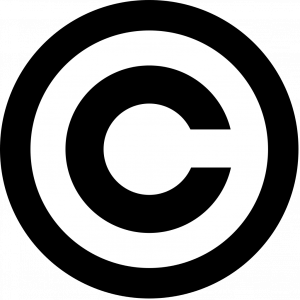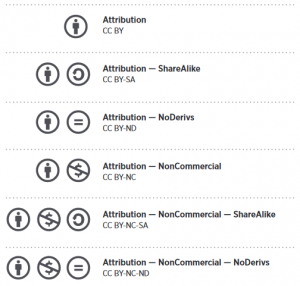Licensing research data
Philippa Frame and Stephanie Jacobs
Getting started
intellectual property and copyright
Intellectual property includes the following outcomes or products from research:
intellectual property and students
In accordance with general law principles, QUT students personally own the intellectual property that they generate. However, in order to participate, or continue to participate, in certain projects students may need to assign to QUT their interest in the intellectual property, in particular, where the project is externally funded, or the project has clear commercialisation potential or objectives.
It is intended that requests for students to assign their intellectual property will be done only where necessary to enable QUT to meet its legal obligations to industry partners, or to achieve the objective of deriving appropriate benefits from innovation at QUT by commercialising intellectual property.
intellectual property and staff
QUT owns the intellectual property generated by staff in the course of their employment. This means that QUT owns the copyright in research data that was generated or compiled by staff in the course of any normal duties covered by their contract of employment.
However, the University assigns the right to publish “scholarly works” to the creators of those works subject to the conditions set out in the QUT Manual of Policies and Procedures Intellectual Property Policy. That is, the assignment is subject to a non-exclusive licence in favour of QUT to allow QUT to use that work for teaching, research and commercialisation purposes and to reproduce and communicate that work online via QUT’s research data repository, Research Data Finder.
 Consider: Is the policy the same in your workplace? Check the policy and compare it to QUT’s. Does it differ?
Consider: Is the policy the same in your workplace? Check the policy and compare it to QUT’s. Does it differ?
copyright

In Australia, it is usually the case that copyright protection will arise once the threshold tests of originality, authorship and creativity are met.
For research data, the thresholds are most often reached when intellectual activity is directed at expressing the data, as opposed to collecting, creating or inputting the data.
For example, if a scientist manipulates machine-generated data by re-compiling, adding or subtracting, annotating, correcting or reformatting the dataset, that intellectual activity or effort may give rise to copyright protection in the dataset, because such manipulation may satisfy the threshold tests of originality, authorship and creativity.
As it is sometimes difficult to determine whether copyright subsists in a dataset, it is recommended that you apply a copyright licence.
At QUT, students retain the copyright ownership of their data unless assigned otherwise, and for staff, unless assigned otherwise, QUT retains ownership of the copyright in their research data.
 Exercise: Use the ‘For copyright owners‘ page on the Department of Infrastructure, Transport, Regional Development and Communications website to answer the following questions:
Exercise: Use the ‘For copyright owners‘ page on the Department of Infrastructure, Transport, Regional Development and Communications website to answer the following questions:
licensing data
Research datasets should be made available via open access or controlled access with research partners, collaborators or requestors, for reuse by other researchers, unless a case based on specific and valid reasons is made for not doing so.
If researchers choose to make their data openly available, they will need to think about how they want others to re-use it. Prospective re-users need to know exactly what they can do with the data. It is a researchers’ responsibility to clearly communicate the terms and conditions that they want re-users of their data to follow. One way they can do this is through the use of licences.
Licences can be exclusive or non-exclusive. An exclusive licence means that only the recipient (licensee) has the right to use the data in the manner covered by the licence – to the exclusion of the copyright owner. A non-exclusive licence means that the recipient (licensee) has the right to use the data in the manner covered by the licence – but not to the exclusion of the copyright owner who is free to use the data in the same manner and to grant non-exclusive licences to other licensees. Data owners generally grant non-exclusive licences to repositories and other end-users of their data.

QUT recommends a Creative Commons licence, which allows data owners to specify the limits that apply to the reuse of their work. The four licence elements – Attribution, Noncommercial, No Derivative Works, and Share Alike – can be combined to create the required licence.
Some licences or agreements allow researchers to place their work in the public domain. When applying these to works, note that all rights and the protections offered by copyright, including the right to be credited as the creator, will be waived. This may have an impact on data citation counts, for which tool and standards are developing and which can be an important metric for research impact. If are required by an archive or repository to use a copyright waiver of public domain dedication, find out whether any “community norms” statements can be applied. These will not be legally binding but can signal researchers’ wishes to potential re-users, where this is practical.
Learn more

The QUT Manual of Policies and Procedures Intellectual Property Policy has more information on the management and protection of intellectual property.
The QUT Manual of Policies and Procedures Copyright Policy has more information on researchers’ obligations under the Copyright Act 1968 (Cth).
For researchers interested in publishing software or code, there are many free and open source software licences available. One of these is the GNU General Public licence. The Free Software Foundation, Inc has some really useful information on this licence, as well as a couple of other GNU licences that may also be applicable. This comparison of free and open-source software licences and the Open Source Initiative may also provide some clarity when choosing a licence.
For more information on copyright and publishing, see the chapter on Copyright and Creative Commons.
Challenge me
 Exercise: Use the Creative Commons Licence tool to explore how to choose the best licence for a research dataset (we recommend using the Chooser beta).
Exercise: Use the Creative Commons Licence tool to explore how to choose the best licence for a research dataset (we recommend using the Chooser beta).
You can also view the licensing flowchart (PDF 94KB) and the Know Your Rights: Understanding CC Licences poster.
Attribution
Content in this chapter has been developed by QUT Library.
All information correct at time of publication, 7 December 2021.
references
Intellectual Property Policy – QUT Manual of Policies and Procedures
Copyright Policy – QUT Manual of Policies and Procedures
image credits
Royalty-free images used on this page were sourced from unsplash.com.
Icons created by Wichai Wi from Noun Project.

